M-Audio AV32 10-Watt Compact Studio Monitor Speakers Review
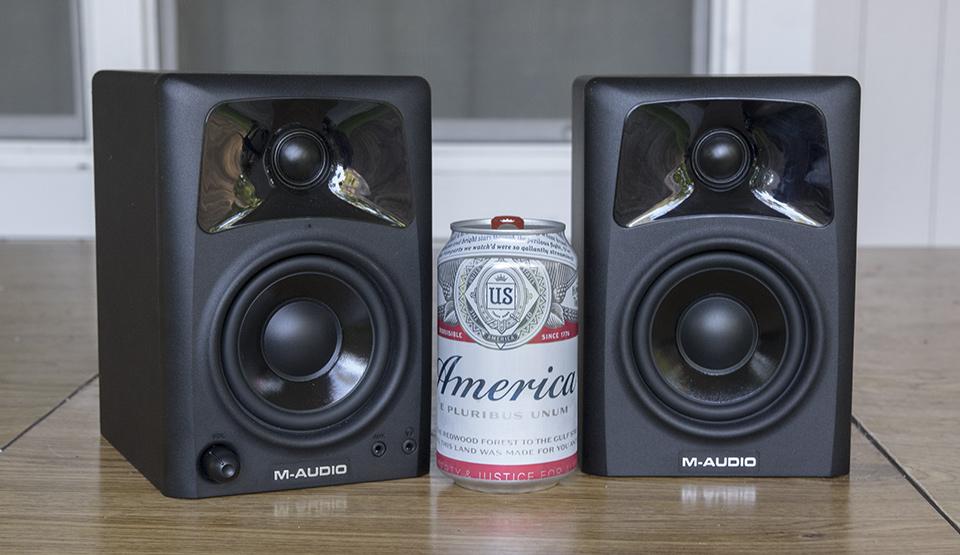
This review is the third in a series of $100 speakers. After hitting the Logitech z623 and Mackie CR3, it's M-Audio's turn, and today we look at the AV32. The M-Audio AV32 is a computer speaker, no doubt about that. The M-Audio brand has done well in the pseudo studio monitor space for a long time, and I'm expecting good things from the little speakers.
Component Overview:
Tweeter
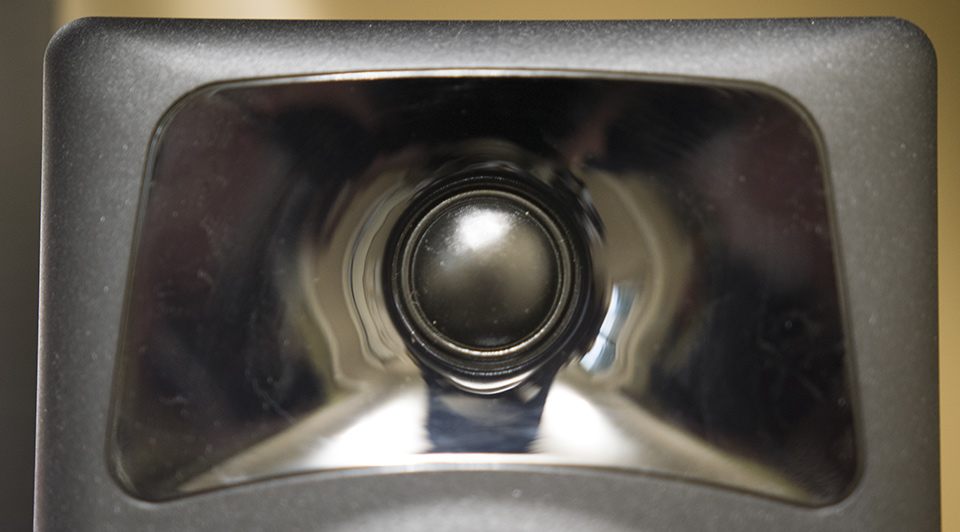
Tweeter is a 1 inch textile dome. It's sat inside of a waveguide that looks like a smaller smoothed version of the one found on a JBL LSR305.
Woofer
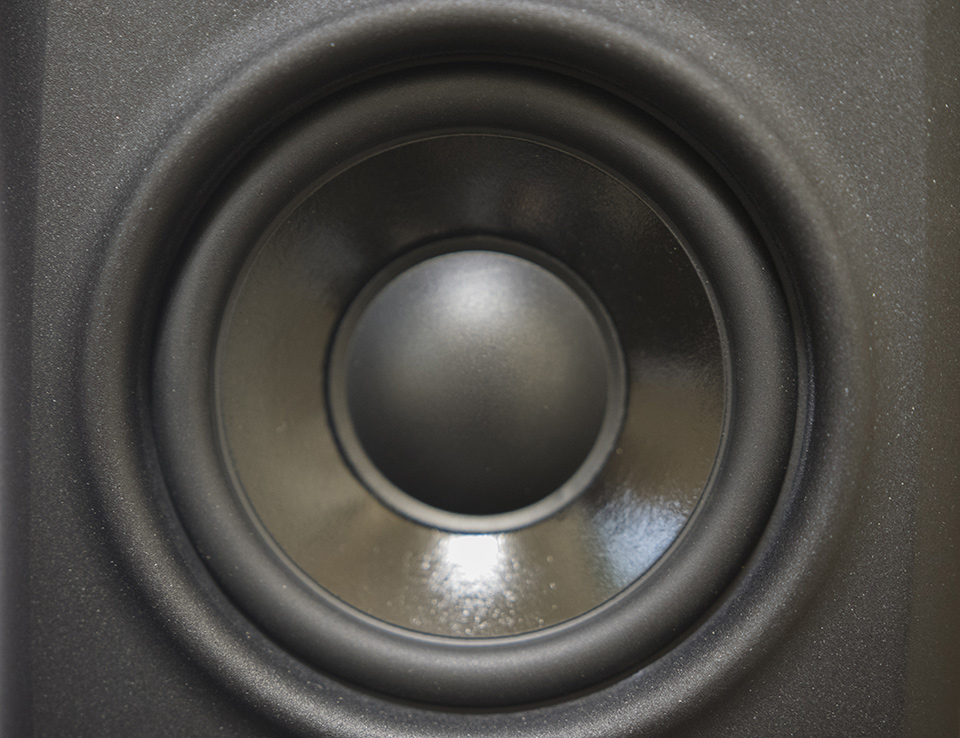
The woofer is a coated paper cone with butyl rubber surround and some type of closed cell foam for the dust cap. M-Audio claims the driver is 3 inch, but it's easily a 3.5, and would probably be called a 4 inch woofer in a parts catalog.
Inputs
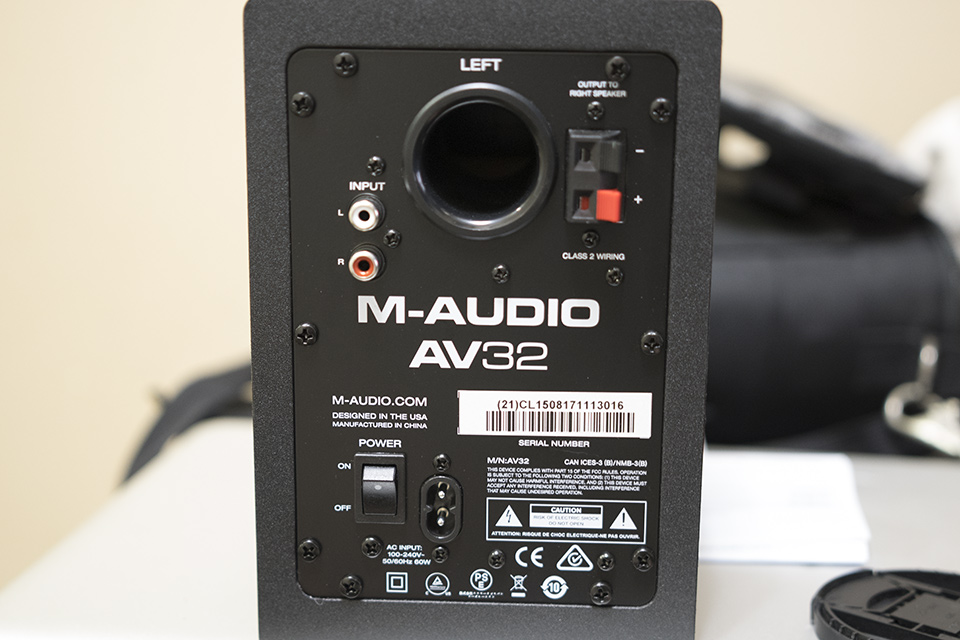
The back of the speaker has a spot for a detachable power cord. There is no wall wart for this speaker, it has an internal power supply. There is no way to turn off the speaker on the front, instead you have a large dip switch on the back, and the speaker auto detects music and will turn itself on and off.
Only inputs on the back are a pair of RCA inputs, no balanced connections.
Also, there is only one powered speaker which must be on the left. The designer in charge at M-Audio must be left-handed, because controls and plugs are normally on right hand speaker.
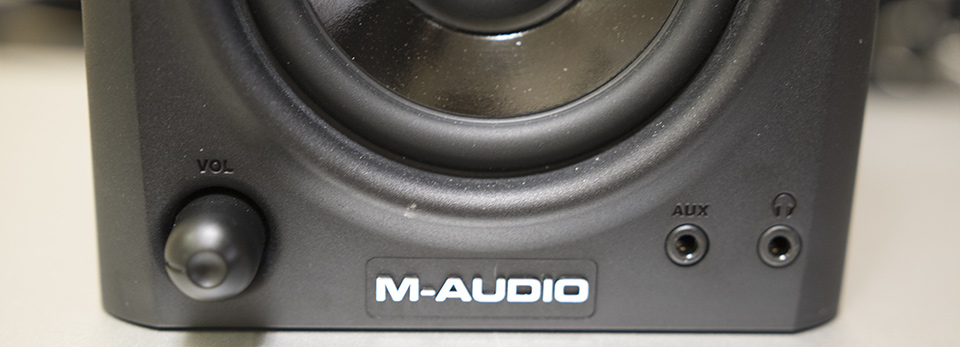
Front of the speaker has an input for a 1/8 inch cable, and 1/8 inch headphone output.
Cabinet
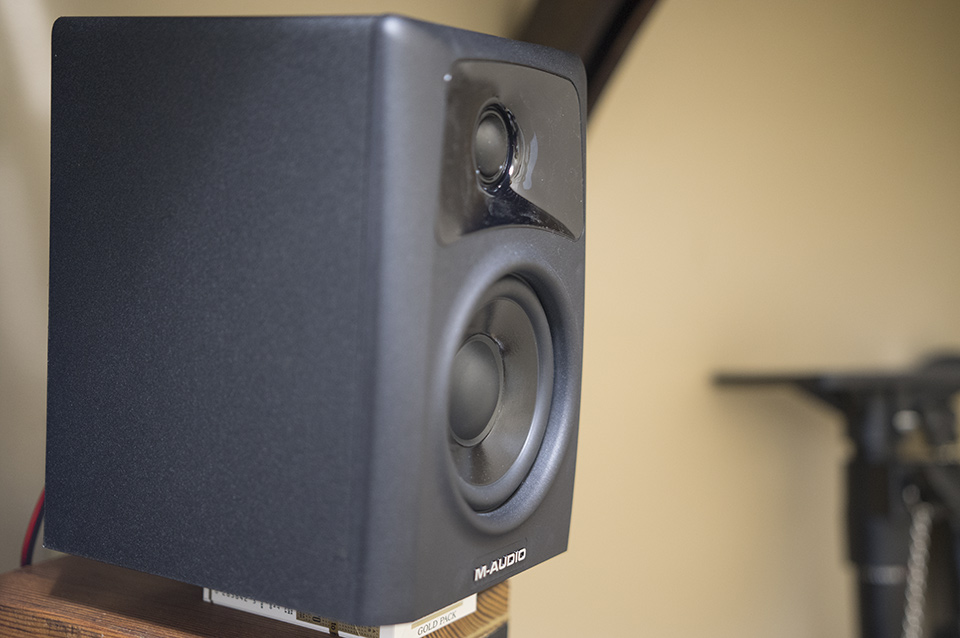
The baffle is plastic, and the cabinet is wood. While the drivers are placed a different depths inside of the baffle, they do not look to be time aligned. The baffle texture and vinyl coating covering the rest of the cabinet is standard issue for cheap speakers with wooden parts.
Port
The port at 1.25x4 inch is a larger diameter than expected. I'm guessing the port tuning is going to be pretty high.
Amplifier
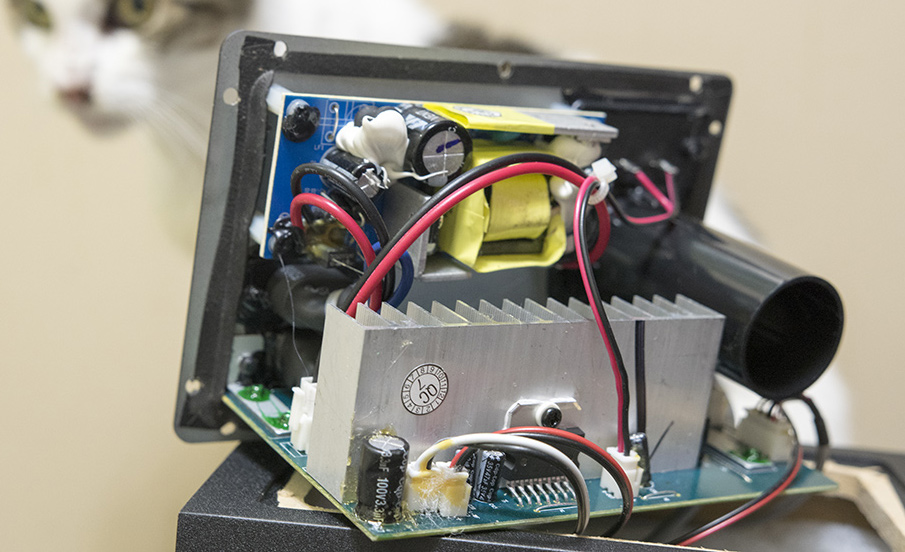
Amp looks like a single chip Class A/B design, and is only rated at 10 watts by M-Audio. You can spot the little wall wart transformer in yellow and smoothing cap next to it.
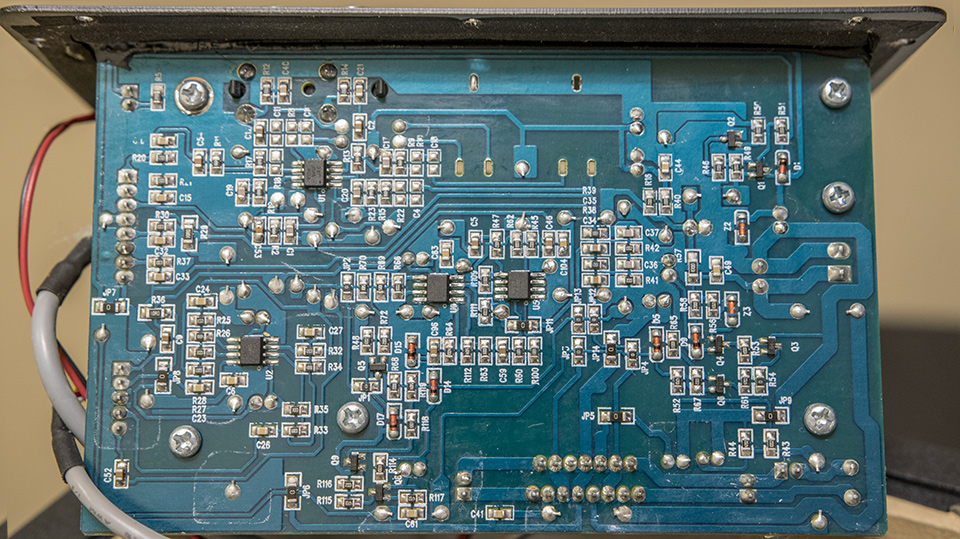
The back of the board has some opamps and a bunch of surface mount caps, resistors, and diodes. Soldering looks pretty good from what I can tell.
Crossover
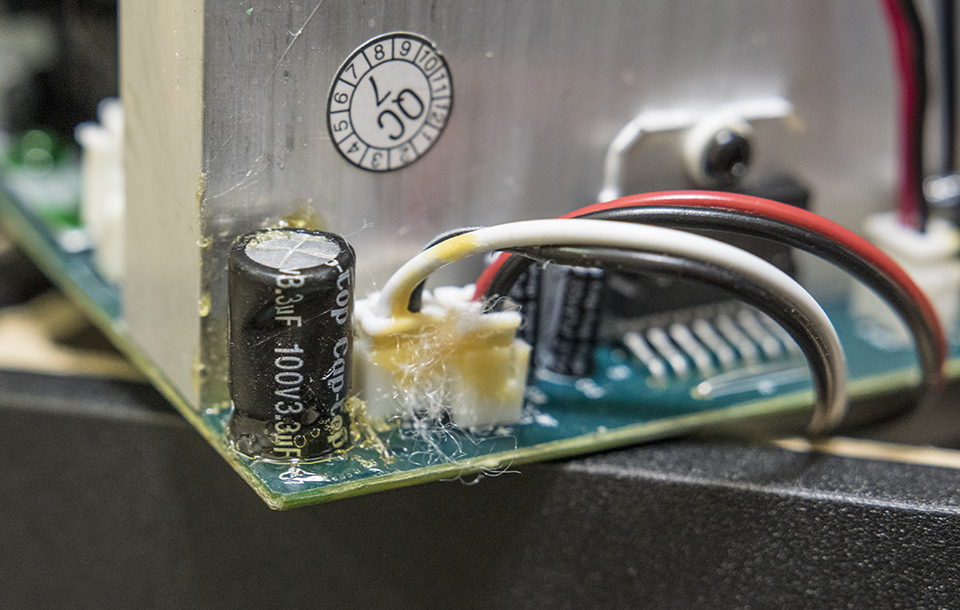
This is the crossover. Not only is it just one cap for the tweeter, the cap is slightly crushed and covered in adhesive jizz.
Grills
No grills, no problems.
Listening Notes:
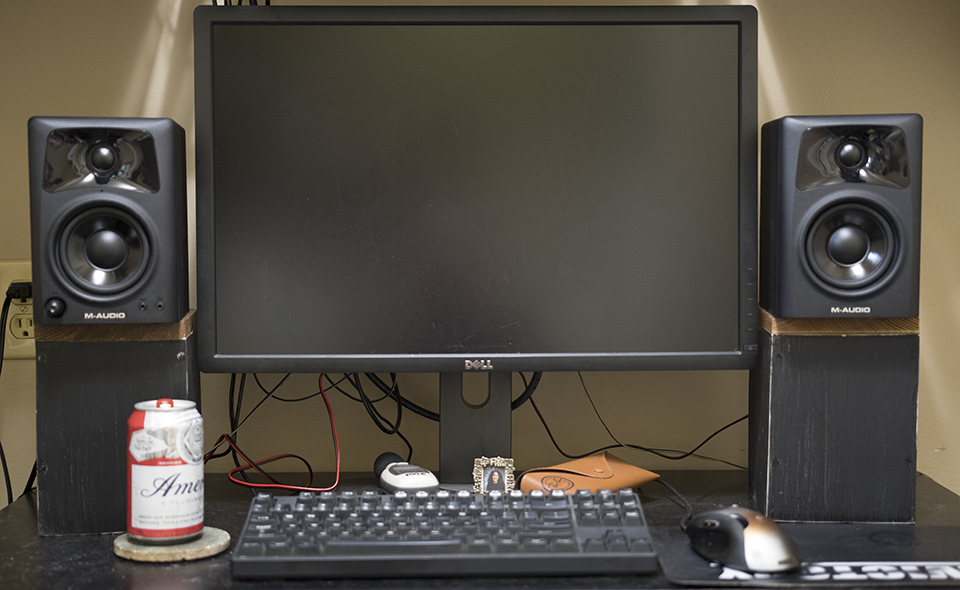
Tiny speakers need tall stands. I ended up throwing some cigarette packs between my stands and the speakers to get them up a little higher.
Yeah, it's got port tube bass boom in the upper bass... Just about the same as the Mackie CR3, but not as bad.
Treble is running hot, sounds bad.
Image is crazy forward, sounds are either next to or behind me, not much in front.
Speaker sounds pretty smooth, I'm not hearing as much cone breakup distortion as I have on other recently reviewed cheap speakers.
Amp seems pretty clean, but limited to low volumes. You can get to 95dB, but it's not a good sound once you arrive.
Measurements:
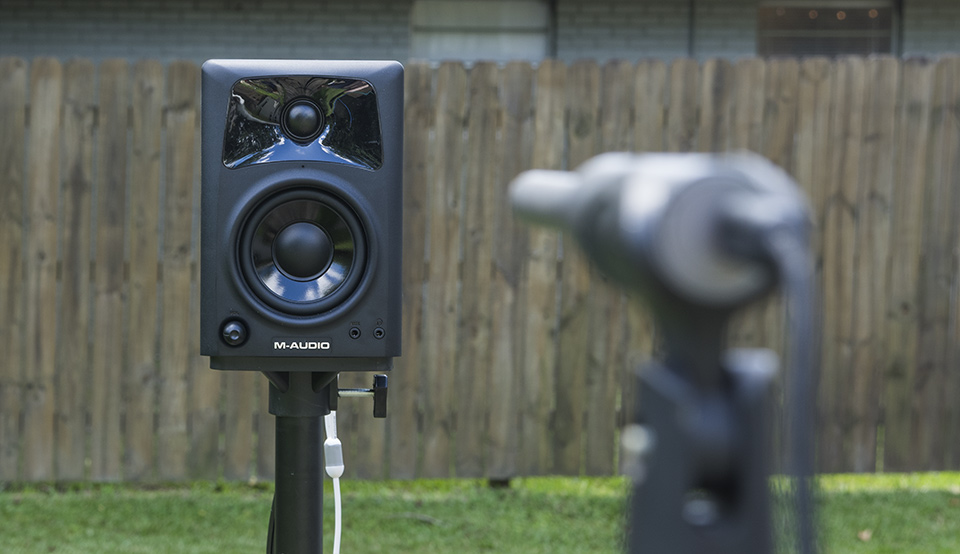
Got everything setup outside for measuring the AV32's. I don't have a laser level, so I ended up slightly off axis. This rolls off the highs in the results, but should still be good enoug to get an idea of what the speaker it doing.
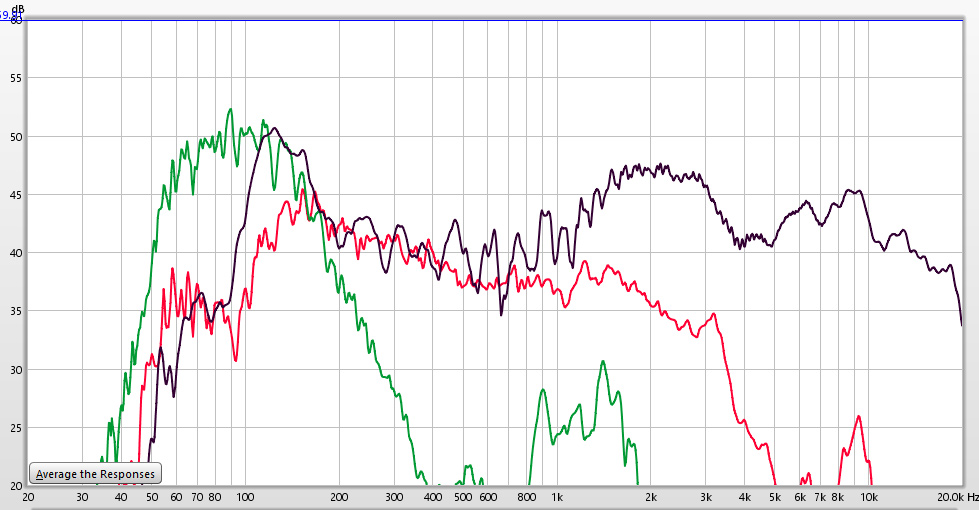
Close to On-Axis Measurement with a close mic of the port and woofer overlaid. Outdoor measurements were getting wrap around cancelation from the port. This should not happen unless you place the speaker way out in the room(6 foot from back wall), so the close mic of the bass is a closer representation of the real performance of the speaker.
Working from left to right. Massive bass boost as predicted, then a very large hump centered at 2k that will push the image closer to the listener and color voices. Looks like some cone breakup mess from 5k-10k this will be harsh sounding for any treble that the speaker produces.
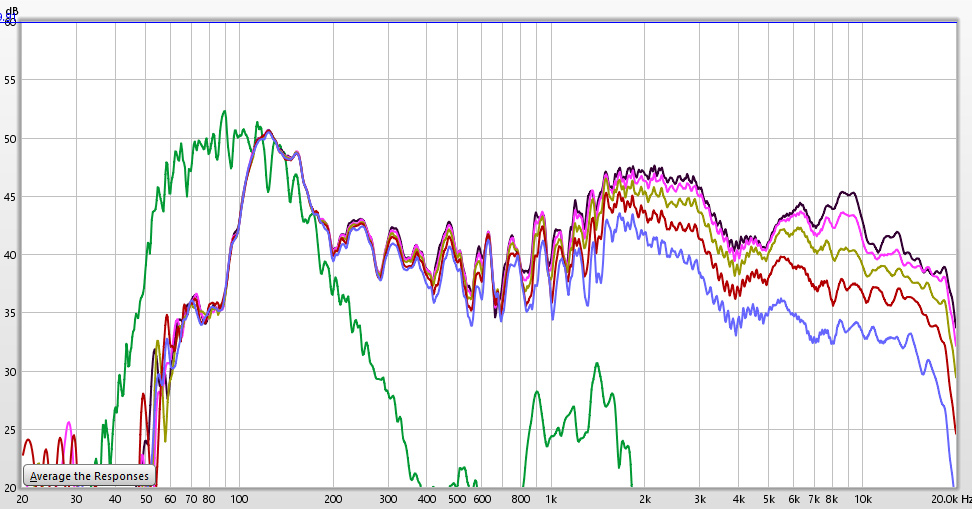
Off axis looks well behaved, Starts rolling off at 1.2k, below that the speaker is pretty omnidirectional from the very small baffle/driver sizes.
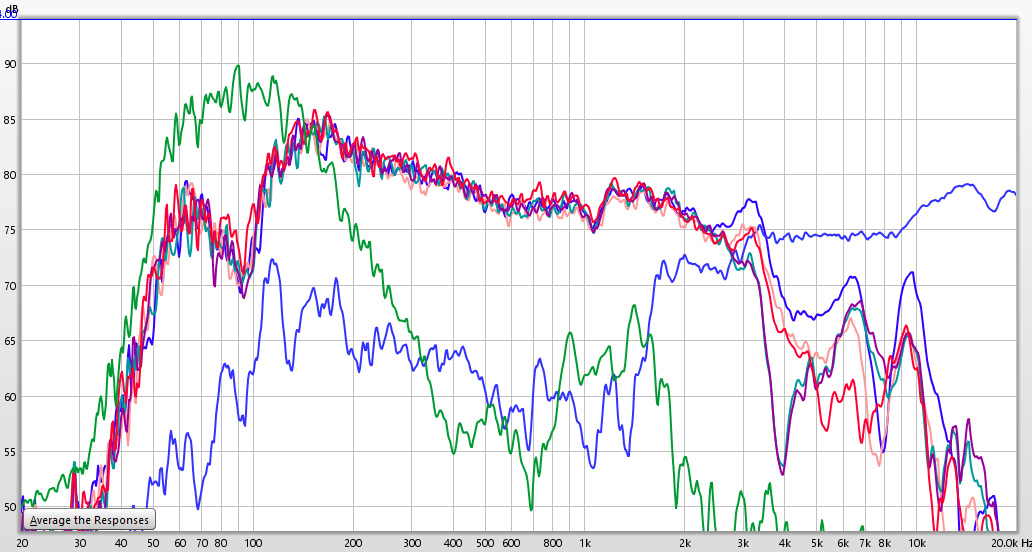
Take a look at the problems here. The tweeter and midrange are out of phase to avoid cancelation, but instead of canceling they are summing. This coupled with the lack of a crossover on the midrange explains the big hump at 2k.
Cone breakup starts at an amazingly low 3k. This cone material must be extremely soft to breakup that low with such a small cone. This explains why I did not hear too much breakup, a softer cone will be smoother entering and after breakup. Seems like a pretty cool solution to not spending the money on crossover components.
DSP Correction:
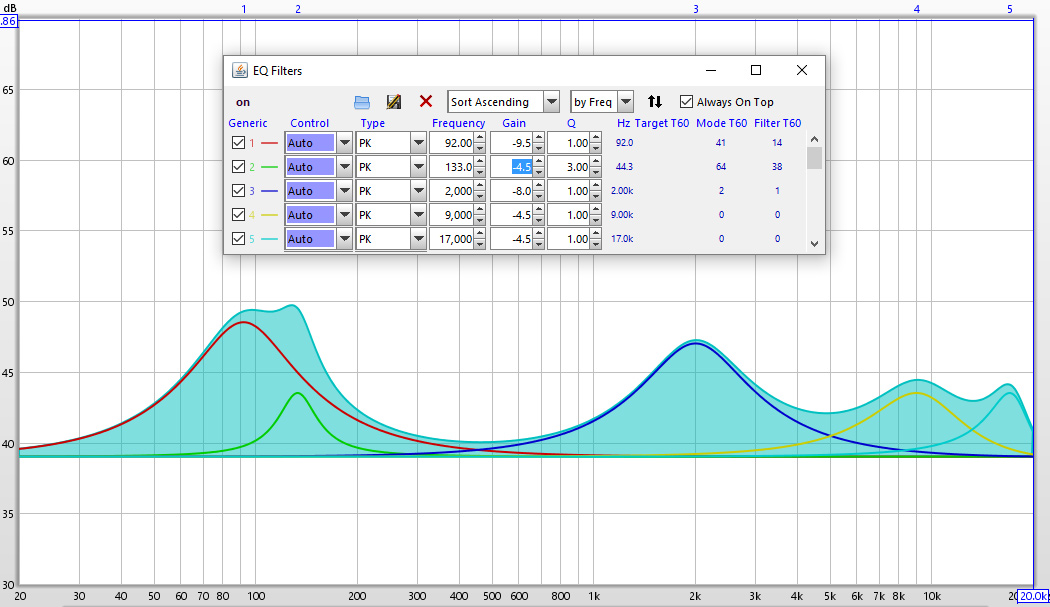
Instead of trying to chase cone breakup on this one I just let it ride. This is a smooth correction that brings the speaker to neutral, should be able to be applied regardless variations in manufacturing.
Corrected Listening Notes:
Woofer on the passive speaker is making noise when played loud. I'm almost certain that it's the lead wires rubbing on the back of the cone. Thing is there are no screws or access points to get in there and fix it. Just need to turn it down I guess.
Response is even, and while not as smooth as something with a real crossover, it sounds pretty good at low volumes.
Dispersion is directional only for the upper frequencies, this makes for a very good imaging performance on the desktop. For desktop use 5 inches wide seems like the right size.
Bass while sloppy, is surprisingly deep for the little speakers. I would say bass a match for the corrected Micca MB42x, maybe even playing a bit deeper.
Final Thoughts:
The AV32 speakers are greater than the sum of their parts. The M-Audio AV32 does better with less, and sounds better than the more complicated 2.1 systems from Logitech, or the more powerful Mackie CR3. Down side is that they don't get very loud.
While I have been impressed with what I got out of the M-Audio AV32 with DSP, there is a better option. None of the speakers I have tested in this price range beat the Micca PB42x.
They cost a few dollars more, but offer real crossovers and a better out of the box sound.
Click here to get the DSP correction file for the M-Audio AV32.
Click here to buy the M-Audio AV32 Speakers
Check out the system finder to see what I recommend.
Other content you may like:
- Vanatoo Transparent One Review - Software update brings new standard of performance!
- Lone Star Audio Fest 2018 - Staying up late, drinking too much, smoking like chimneys!
- Andrew Jones goes back the be begining, ELAC B5.2 Debut 2.0 Review is up!
- New Scores for all reviewed speakers - Compare and sort for fun!
- Creative Sound Solutions DIY Solution for the high end - CSS Criton 1TD v2 review is up!
- Dayton Makes a Budget Desktop speaker with a crossover - Dayton Audio MK402 review is up!
- Smaller than small, deeper than deep - iLoud Micro Monitor review is up!
- Vanatoo's new speaker, The Transparent Zero review is up!
- SVS Prime Bookshelf Review is now available for your viewing pleasure
- ELAC A-Stock UB5 Listening Impressions are up!
- 30 years in the making, the ancient Bose 901 finally gets measured - The Bose 901 review is up!
- Lock and load, we are hitting the bottom of the barrel with both barrels - The Logitech z313 review is up!
- Bulletproof speakers... No, it's just the B&W 686 S2 Review!
- Declare independence from the British sound! - The KEF Q300 review is up!
- Recommended System Finder - Just in time for the Holidays!
- JBL LSR308 Studio Montor - Super Massive Epic Review!
- Two years after starting this site I finally get around to talking about my stereo.
- Small and cheap speakers transform into retarded and good... Micca COVO-S Review!
- AMT tweeter on a B652? The Dayton B652-AIR is reviewed for great justice!
- JBL LSR305 Studio Monitor Review!
- Zu Essence Review!

